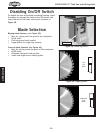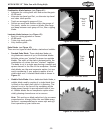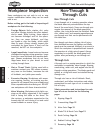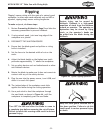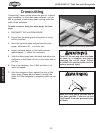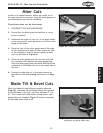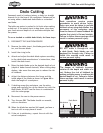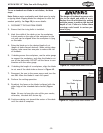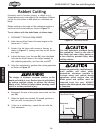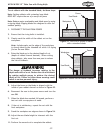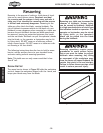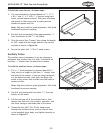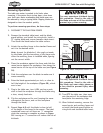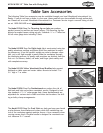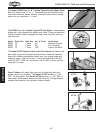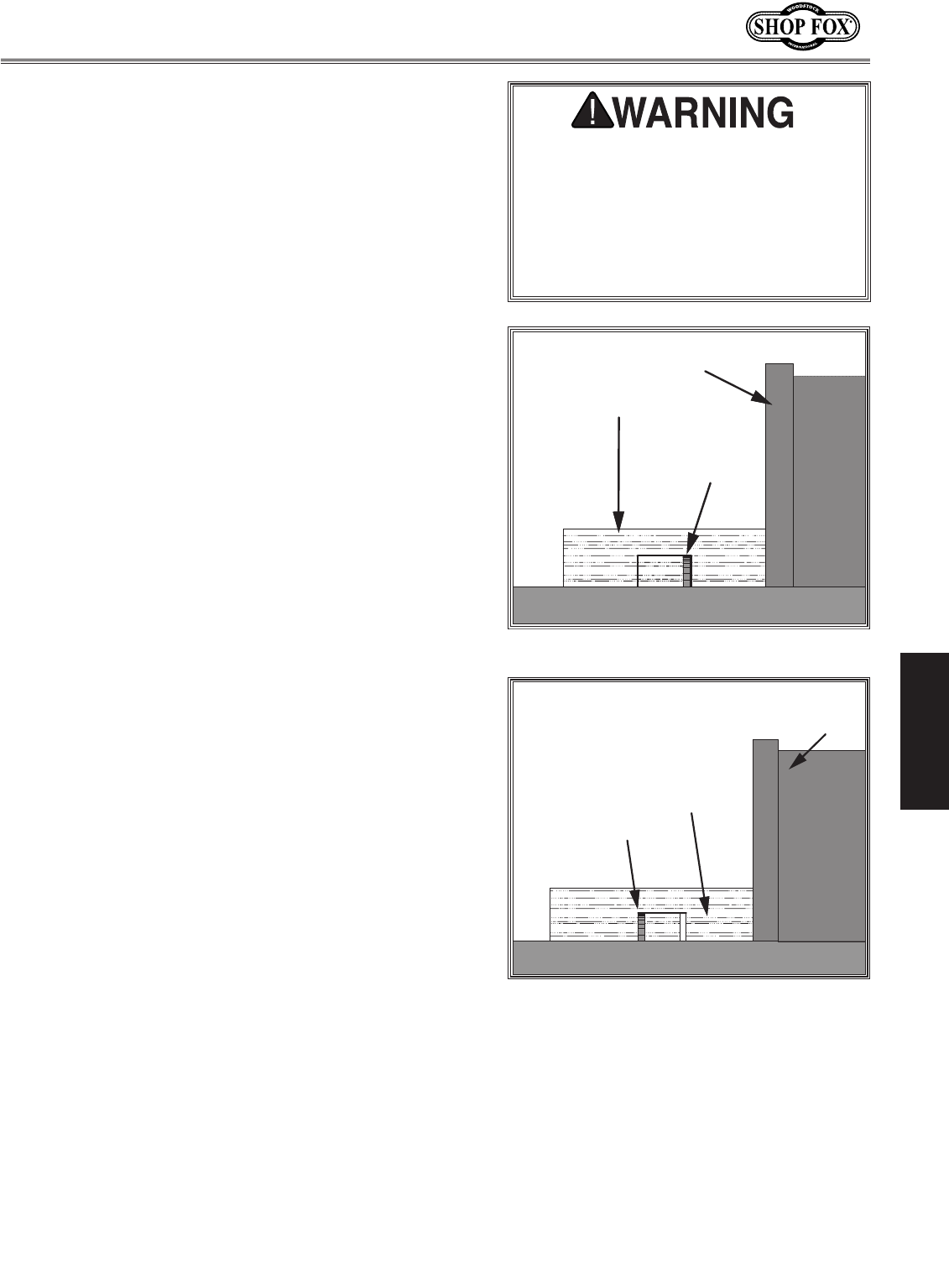
-35-
W1761/W1762 12" Table Saw with Riving Knife
OPERATIONS
To use a standard saw blade to cut dadoes, do these
steps:
Note: Reduce motor overloading and blade wear by using
a ripping blade. Ripping blades are designed to clear the
sawdust quickly. See Page 28 for more details.
1. DISCONNECT THE SAW FROM POWER!
2. Ensure that the riving knife is installed.
3. Mark the width of the dado cut on the workpiece.
Include marks on the edge of the workpiece so the
cut path can be aligned when the workpiece is lying
on the table.
4. Raise the blade up to the desired depth of cut
(depth of dado channel desired). When cutting deep
dadoes, take more than one pass to reduce the risk
of kickback.
5. If dadoing across the workpiece, use the miter gauge
to support the workpiece, and align the blade to cut
one of the dado sides. DO NOT use the fence in com
-
bination with the miter gauge.
6. If dadoing the length of a workpiece, align the blade
to cut one of the dado sides as shown in
Figure 49.
7. Reconnect the saw to the power source and turn the
saw ON. Allow the blade to reach full speed.
8. Perform the cutting operation.
9. Re-adjust the fence so the blade is aligned with the
other edge of the intended dado channel (
Figure
50).
Note: Be sure to keep the cuts within your marks;
otherwise, the dado will be too big.
10. Continue making cuts toward the center of the dado
until the dado is complete.
Figure 49. Single-blade dado first cut.
The danger of kickback increases rela-
tive to the depth and width of a cut.
Reduce the risk of kickback by making
multiple passes to achieve the desired
depth of cut
. Failure to follow these
warnings could result in serious per
-
sonal injury.
Figure 50. Single-blade dado second cut.




